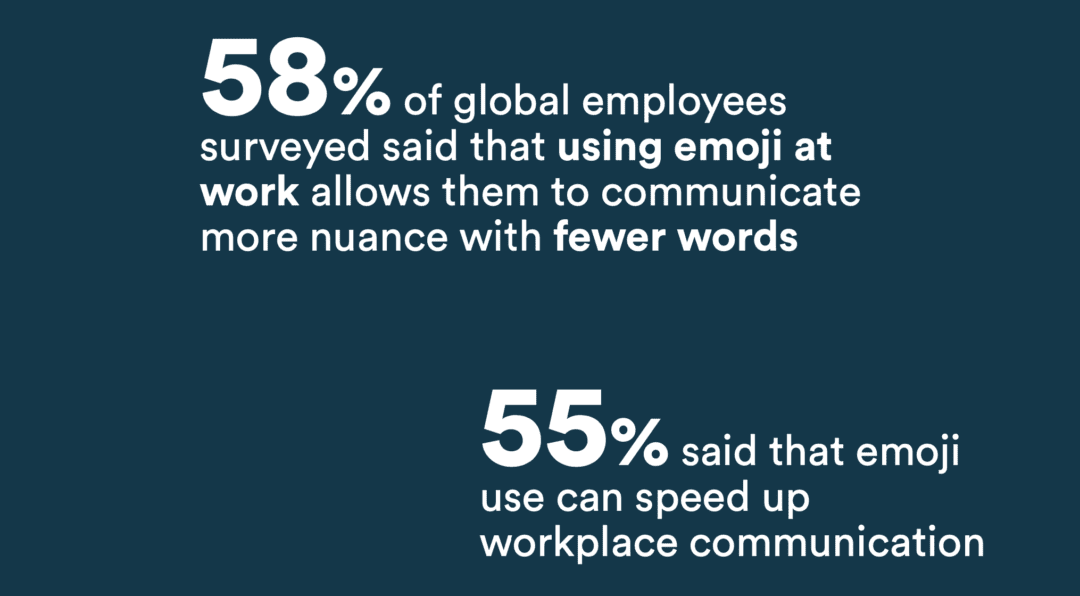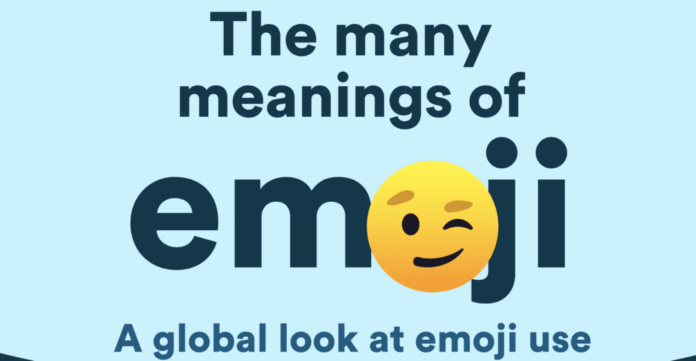In honour of World Emoji Day, Slack paired up with their customer Duolingo to survey 9,400 hybrid workers in North America, Asia and Europe. It is interesting to see how each emoji is perceived by different individuals. While ones that represent joy, laughter, sorrow, and grief have become popular and have a common meaning for all; emojis representing money, few fruits and vegetables have varied perceptions.
World Emoji Day Survey (Slack x Duolingo) – India findings
46% of Indian respondents said the emoji means “I see you,” while 27% think it means “I’m looking at this” and 10% believe it to mean “I know” with another 10% using it to say “whoa.”
45% of survey respondents believe the emoji means “I’m crying tears of joy” while 32% think it means “that’s hilarious” and a small but notable 12% of survey takers use the emoji to mean “embarrassingly funny.”
It turns out that Indians are confused about the distinction between the “loudly crying” () emoji and “face with tears of joy” (). When shown the “loudly crying” emoji, 56% said they use it to show “sobbing/upset crying” while 22% believe that the emoji means “I’m crying tears of joy.”
Watch out when using the emoji. While 52% of respondents say it means “I love you (romantically), 27% see it as a sign of appreciation and “platonic love.”
Survey respondents seemed to have the most interpretations of this emoji with 44% of people using it to show “I’m kidding”, 28% of people using it to show they are “feeling flirty” and 26% believing that it “refers to an inside joke.”
A whopping 57% of survey takers use this emoji to show that they are “taking care of themselves,” while 18% use it to communicate “there’s gossip” and 12% of survey takers expressed that they don’t use this emoji.
One emoji that might be causing confusion is the skull: 46% of respondents said the skull emoji represents death, while 35% said they use it to show that something is so funny, they’re “dead.”
This emoji is another misinterpreted one with an almost even split of 41% who believed it means “influx of money” while 40% of Indian respondents used it to say “hoping for money” and interestingly 14% of the respondents used it to depict a “loss of money.”
And if a coworker sends an eggplant emoji (), hold off before immediately calling HR. 36% of Indian respondents said the eggplant is nothing more than a literal representation of the fruit. That said, 28% of Indians surveyed did say they use the eggplant to show they’re “feeling flirty,” and surprisingly a small but notable 16% use the emoji to convey that they are “feeling hungry.”

Compared to other countries that don’t think too hard about it, 78% of Indian respondents are not only aware that emojis look different on different platforms, but they take it into consideration when sending messages to other people.
This emoji proved to be an interesting split between literal and figurative interpretation: 47% of people use the emoji to literally represent “poop” while 29% use it to say “something has gone wrong (gone to crap).” Only 11% of Indians believe it to mean “gross.”
The top three confusing emojis were , and which perplexed around one-third (31% – 36%) of Indian respondents.
General Emoji Usage
- In the survey across 11 different countries, 57% of global respondents believe messages are “incomplete” without an emoji. 71% of Americans surveyed said the same.
- Globally, younger generations overall were more likely to say the recipient misunderstood an emoji they’ve sent (31% of Gen Z and 24% of millennials).
- When using emoji in texts with other people, the survey found
- Half of the respondents (53%) usually include emoji when they text their coworkers.
- 21% usually text their boss/manager emoji while 30% never do.
- Around two-thirds of respondents text their friends (68%) and family (72%) emoji.
- Around 58% of survey respondents agree that they’ve been caught unaware of specific emoji having multiple meanings.
- Survey respondents are more likely to send an emoji to someone their age or younger than them compared with someone older, while 28% of respondents don’t care about age when it comes to their emoji use.
Workplace Findings
- Fifty-eight percent of global employees surveyed said using emoji at work allows them to communicate more nuance with fewer words, and 55% said emoji use can speed up workplace communication. Notably, this was higher in the U.S.—69% of American respondents said emoji allowed them more nuance, while 67% said it sped up communication.
- Results also found that 67% of global respondents feel closer and more bonded in a conversation when messaging someone who understands the emoji they’re using.
- Globally, respondents are three times as likely to “always” use emoji when messaging their coworkers compared with their boss (21% vs. 7%).
- With friends, respondents are comfortable sending emoji after an average of three days—while they’re not comfortable sending emoji to coworkers until after four days. It’s even longer for a boss: the average respondent says it takes five days for them to be comfortable sending their boss an emoji.
- 59% of U.S. survey respondents agree that their company has their own “language” of emoji for internal communication while only 39% of global respondents agree.
- Globally, the top three off-limits are the kiss mark (), the tongue (), then the poop () emoji for your boss and the eggplant emoji () for your coworkers.
- 20% of U.S. survey respondents found no emoji is off-limits in the workplace for their peers or their boss.
- Regardless of whether it’s off-limits or not, over half of all survey respondents (56%) say they won’t use specific emoji unless the person they are messaging uses it first to show it’s OK to use.
Global Comparisons
- Globally, when shown the “money with wings” () emoji, respondents were split on whether it meant a loss of money (28%) or an influx of money (31%). But this varied by country: for example, respondents from Japan were much more likely to select “loss of money” (59%)—compared with only 7% who said it referred to an influx.
- Respondents were also split on whether or not the “face throwing a kiss” () emoji is “I love you” in a platonic or romantic sense. In the global results, platonic received 29% of the vote, while romantic received 28%. U.S. respondents were slightly more likely to use it in a romantic way (34% vs. 26%)—as were Indian respondents (52% vs. 27%). Japan was the opposite: three in 10 Japanese respondents use the kissy face in a platonic sense, compared with 16% who use it romantically.
- And the “slightly smiling face” () may not be as positive as some people think. While “feeling happy” (38%) and “general positivity” (39%) were the top uses for the emoji globally, many people also use it to show “deep exasperation and/or distrust” (14%). This was higher in specific countries, including the U.S., where that choice had one-fifth of the vote. It was notably lower in countries like Japan (5%), South Korea (6%) and Canada (8%).
So do let us know about your favourite emoji in the comments section below or tweet to us on @theunbiasedblog












i am one of the people who don’t use emoji. It’s not like i hate emoji but when typing, i really don’t remember to use them.